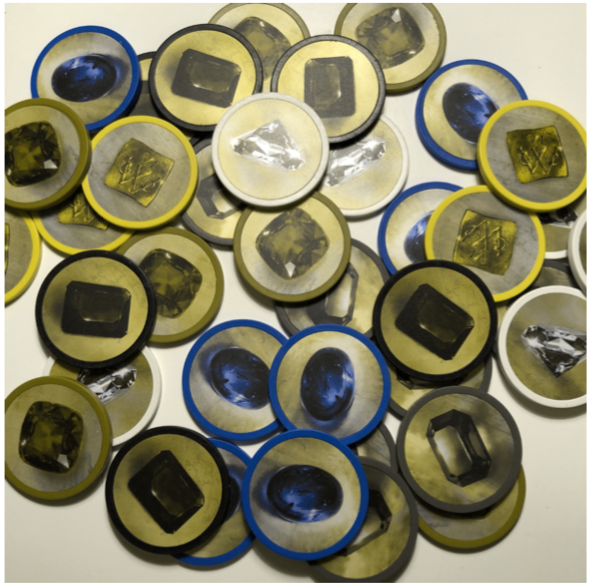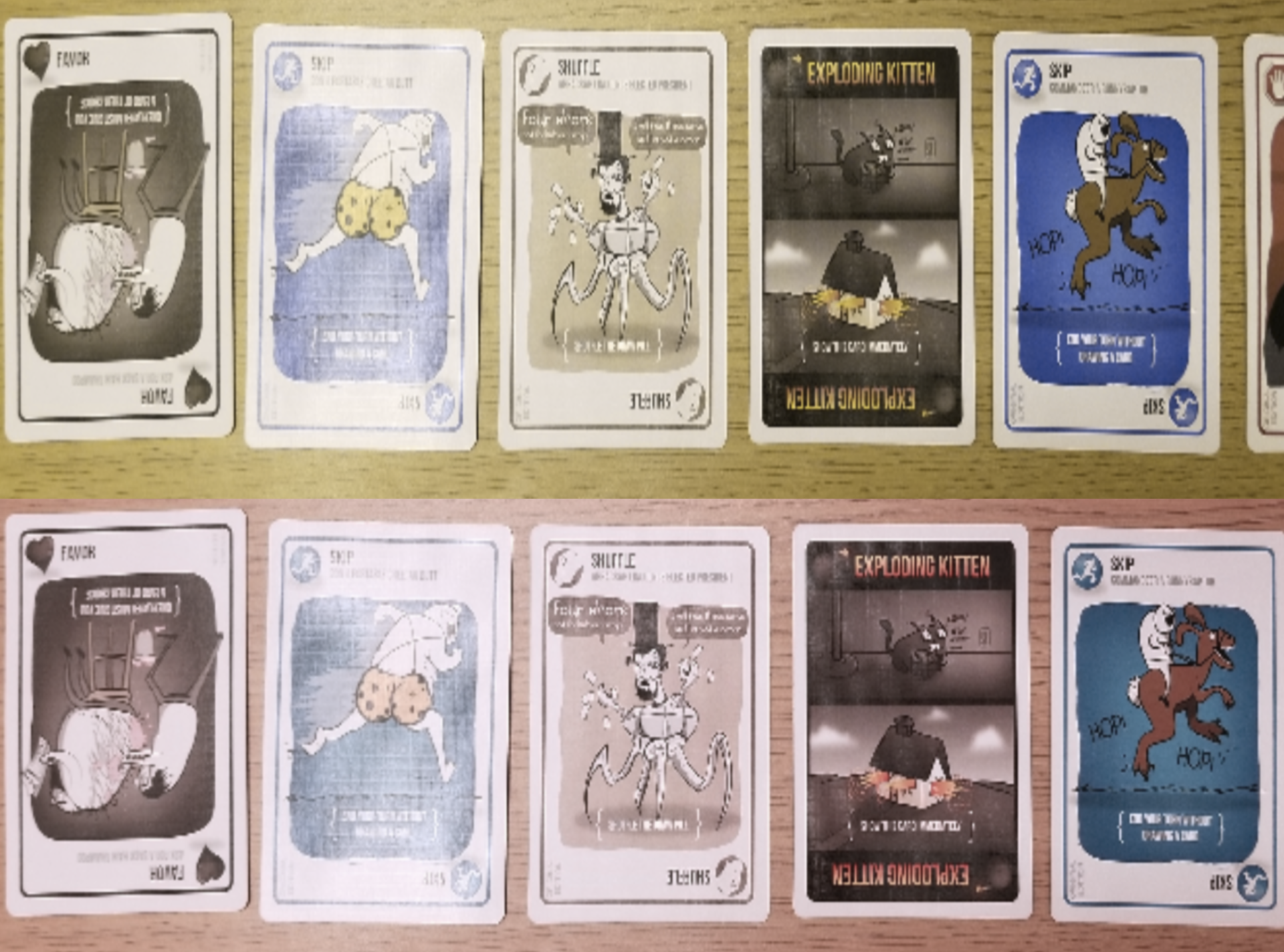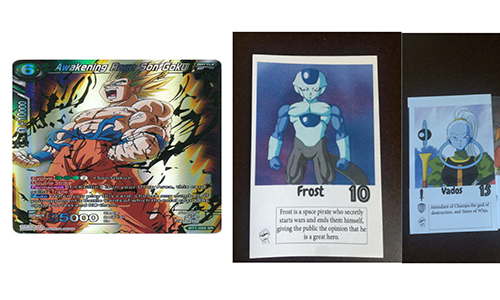Splendor
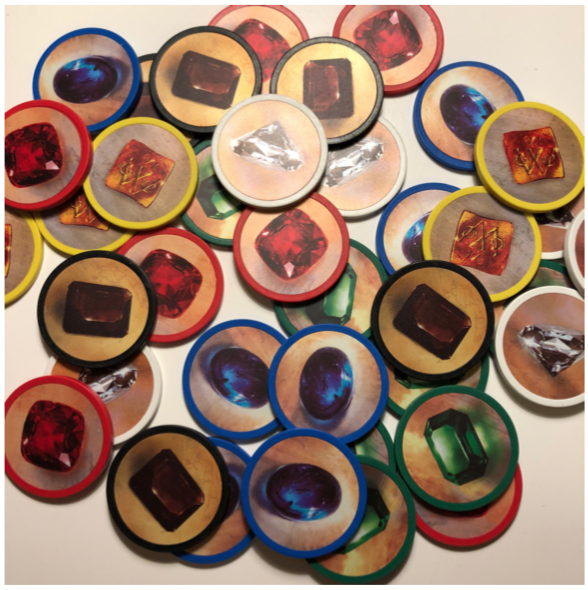
Splendor is a game of gem collecting using cards and chips. As the gem chips are vital to play, the student examined how the gems could be more visually accessible.
Exploding Kittens
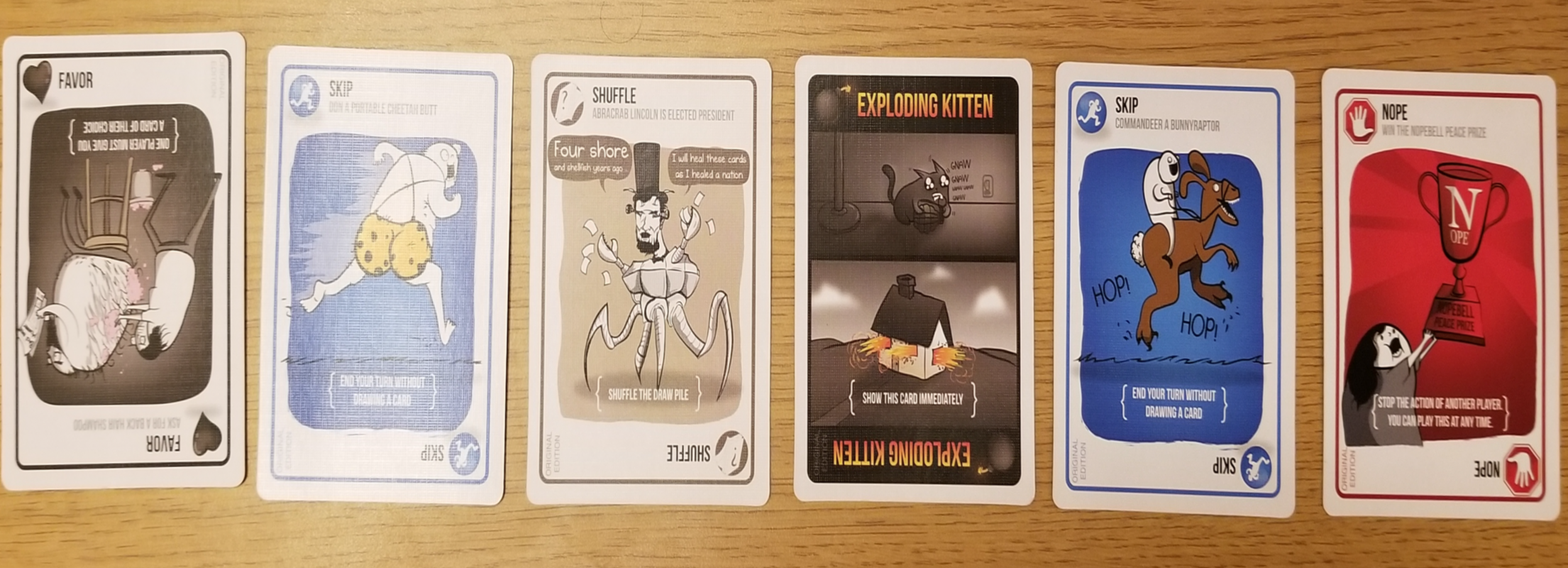
Exploding Kittens is a fast-paced card game and the student noted that the cards are visually complex and dense with wordplay and visual jokes. Due to the fast-paced nature of the game, this student tackled the amount of visual information/complexity on the cards.
Airplane Chess
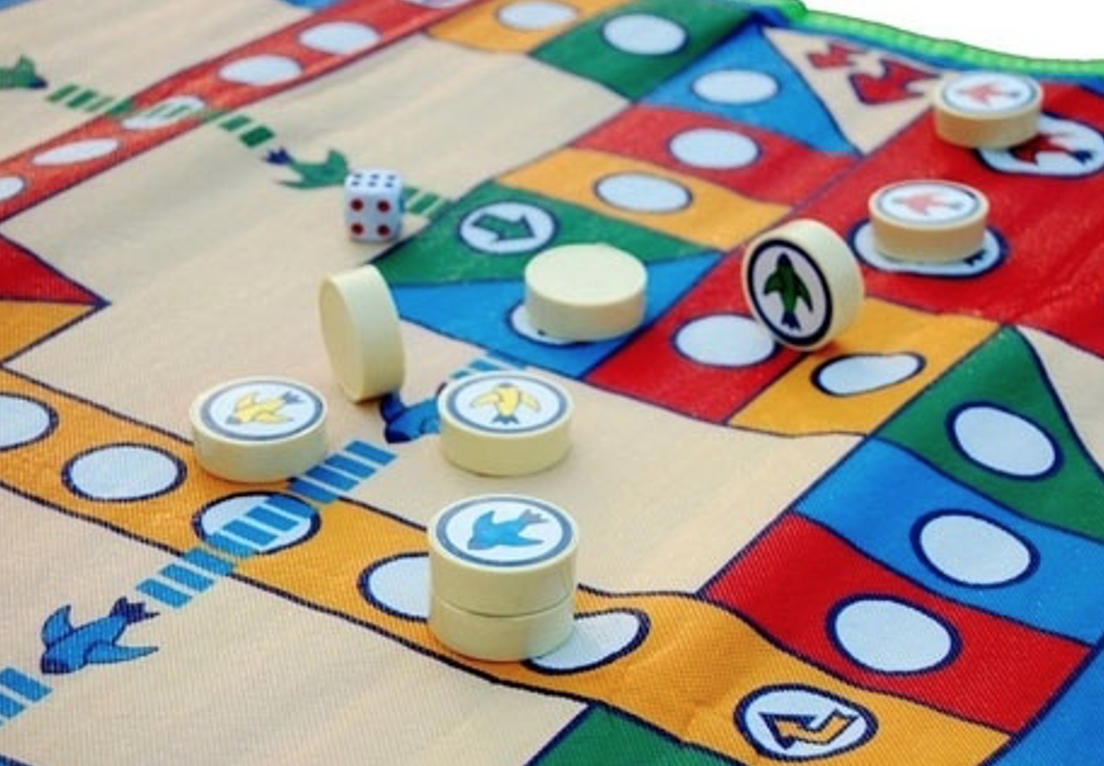
Although many students covered popular, well-known games, the project also allowed students a chance to share less known games with the class. This student, for example, studied Airplane Chess a game popular in China. The student ran the components through the Coblis color-blindness simulator and determined that unique shapes for each player would help players keep track of which pieces were theirs.
Dragonball Z Card Game

The Dragonball Z card game is a stylish and visually exciting game. However, this student noted numerous problems with the design of the cards due to the amount of visual information present including the character image, stats, numbers, and text that must be read and refered to quickly in order to play.
 Lens: Visual
Lens: Visual

